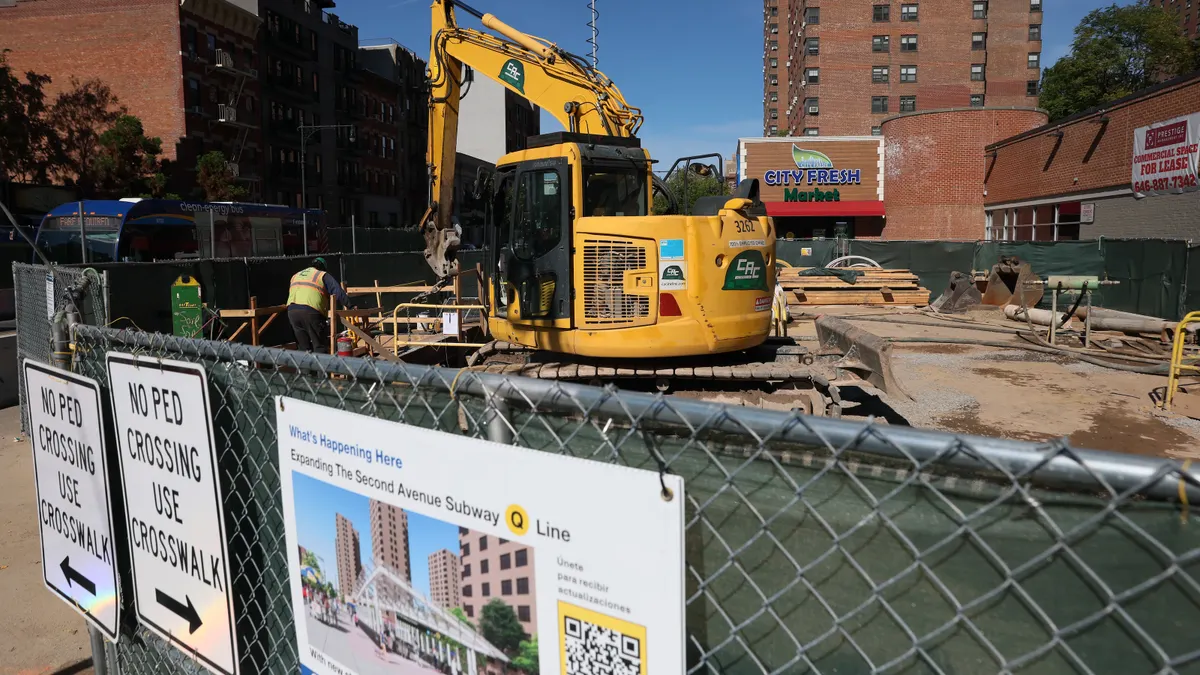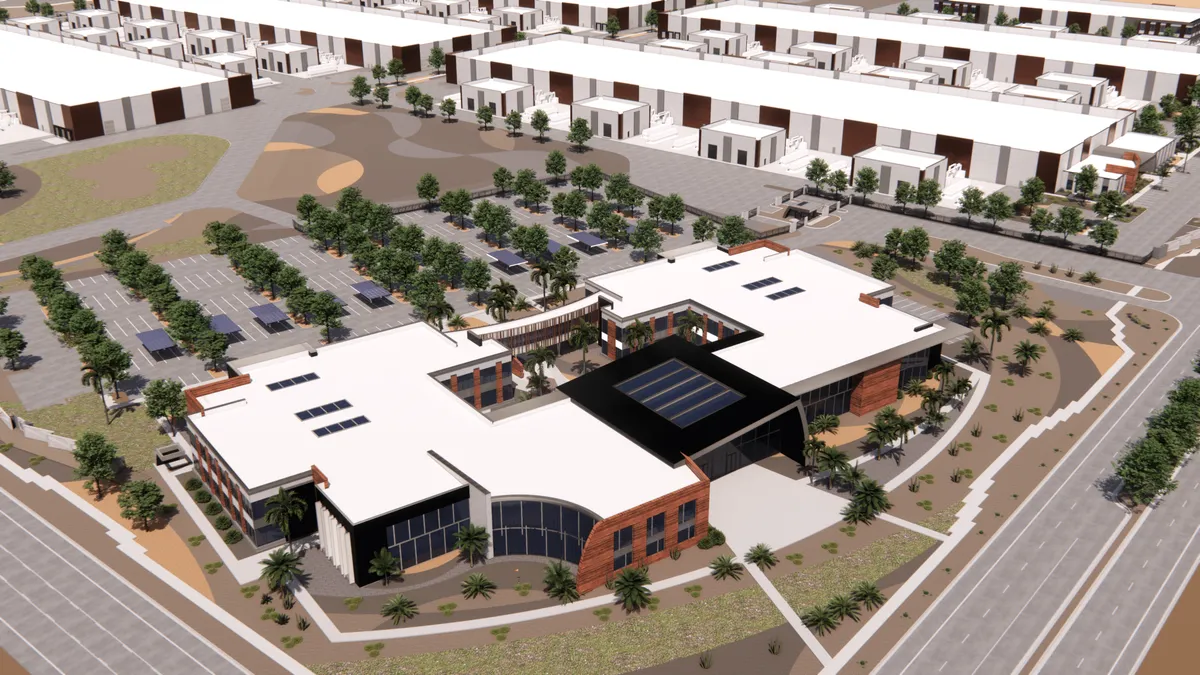The industry had been gearing up for first-time buyers to flood the market in 2017, but the landscape is changing. A jump in mortgage rates following the election is pricing some of those would-be buyers out, signaling that activity will likely slow in the coming year. That’s according to Realtor.com’s 2017 Housing Forecast, which also predicts a damper on price appreciation and a stabilization in the national homeownership rate.
"Because of demographics and affordability challenges that are starting to emerge, more people are focused on getting into homeownership because renting is continuing to have the same challenges and, over the long term, is something that can really impact a household’s financial situation," said Realtor.com Chief Economist Jonathan Smoke.
Below, we recap the key takeaways from this year's report.
Millennials and their parents take the lead
The largest and second-largest demographics, respectively, millennials and baby boomers, will dominate the market in 2017 as the living situations of both groups are in flux. Millennials are expected to account for 33% of homebuyers for the year and baby boomers 30%.
Many millennials are purchasing homes for the first time, meaning the post-election surge in mortgage interest rates by roughly 40 basis points presents the biggest hurdle for that price-sensitive group, according to Smoke, and could prevent their share of sales from reaching prerecession levels for the next several years. The dramatic rate shift had more than double the impact of a move by the Federal Reserve to raise rates, he said, and some industry observers expect the market to move back on such a strong reaction to inflation expectations, opening up a window where credit for homes becomes easier to access.
Other challenges include tight inventory conditions nationwide and high prices. Meanwhile, boomers are taking advantage of elevated home values to sell their properties and downsize, opening more existing inventory to potential first-time buyers.
Price appreciation will slow down
Home-price growth should decelerate to 3.9% in 2017 from 4.9% in 2016, though Smoke noted that those figures are still above average. Demand remains stronger than supply in most parts of the country, but some of the places that have seen prices rise most dramatically, such as northern California, are adding inventory and thus reducing price pressure — but only somewhat.
Of the 100-largest U.S. metros, 46 should see depreciation of at least 1%, with Lakeland-Winter Haven, FL; Durham-Chapel Hill, NC; and Jackson, MS, seeing the biggest drops. Meanwhile, Greensboro-High Point, NC; Akron, OH; and Baltimore-Columbia-Towson, MD, will likely experience the largest gains.
The West region is expected to continue to see the highest prices and sales, with increases of 5.8% and 4.7%, respectively, forecast for the coming year. Five of the top 10 housing markets for 2017, according to Realtor.com, are occupied by West Coast metros: Los Angeles; Sacramento, CA; Riverside, CA; Tucson, AZ; and Portland, OR.
Top 10 metros for price, sales gains
| Rank | Metropolitan Statistical Area | Price | Sales |
|---|---|---|---|
| 1 | Phoenix-Mesa-Scottsdale, AZ | 5.94% | 7.24% |
| 2 | Los Angeles-Long Beach-Anaheim, CA | 6.90% | 6.03% |
| 3 | Boston-Cambridge-Newton, MA-NH | 6.09% | 6.32% |
| 4 | Sacramento-Roseville-Arden-Arcade, CA | 7.18% | 4.92% |
| 5 | Riverside-San Bernadino-Ontario, CA | 4.98% | 6.88% |
| 6 | Jacksonville, FL | 4.79% | 7.03% |
| 7 | Orlando-Kissimmee-Sanford, FL | 5.69% | 6.10% |
| 8 | Raleigh, NC | 4.16% | 7.55% |
| 9 | Tucson, AZ | 6.10% | 5.47% |
| 10 | Portland-Vancouver-Hillsboro, OR-WA | 6.55% | 5.02% |
Bottom 10 metros for price, sales gains
| Rank | Metropolitan Statistical Area | Price | Sales |
|---|---|---|---|
| 100 | Chicago-Naperville-Elgin, IL-IN-WI | 1.95% | 2.27% |
| 99 | Bridgeport-Stamford-Norwalk, CT | 1.92% | 2.56% |
| 98 | Hartford-West Hartford-East Hartford, CT | 4.68% | 0.42% |
| 97 | Albany-Schenectady-Troy, NY | 1.78% | 3.51% |
| 96 | Buffalo-Cheektowaga-Niagara Falls, NY | 3.36% | 2.08% |
| 95 | Baltimore-Columbia-Towson, MD | 2.97% | 2.88% |
| 94 | Syracuse, NY | 3.41% | 2.55% |
| 93 | Allentown-Bethlehem-Easton, PA-NJ | 3.07% | 3.00% |
| 92 | Wichita, KS | 3.89% | 2.51% |
| 91 | Dayton, OH | 4.25% | 2.18% |
SOURCE: Realtor.com
The homeownership rate will stabilize
The U.S. homeownership rate is expected to lock in around 63.5% for 2017 after hitting a 51-year low in the second quarter of 2016. According to Smoke, that’s "one of the more positive forecasts" on homeownership today.
While the rate could edge up somewhat, it isn’t likely to increase substantially. Inventory is down 11% across the top 100 U.S. metros while homes there are on the market 11 days fewer than in the U.S. overall. That’s leading to high home and rental prices in those pockets and making it difficult for younger buyers to afford and qualify for a home in areas where job growth tends to be the highest. Realtor.com projects new home sales to increase 10% and new home starts 3% in 2017.
Although the U.S. population is becoming more racially and ethnically diverse, minority groups continue to qualify for homes in lower numbers that whites, which could limit some of the potential homeownership gains on the horizon. In the third quarter of 2016, 41.3% of blacks and 47% of Hispanics owned their homes compared to 71.9% of whites and a national average of 63.5%.
The Midwest beckons
As housing inventory tightens and prices climb on the coasts, millennials are staying in or relocating to the Midwest. The region already has an above-average population share of millennials, Smoke said, and that group is now staying closer to home after college. The effect is pronounced in Midwestern markets close to major universities and is dually driven by the affordability of homeownership there and, often, the proximity to family and friends.
Millennials account for 42% of homebuyers in the region compared to an average of 38% nationally. Madison, WI; Columbus, OH; Omaha, NE; Des Moines, IA; and Minneapolis are currently the most active Midwest markets for the group.
"There is a huge disparity in how many dollars are needed to get a home in Des Moines versus San Francisco," Smoke said. "Affordability is a key part of why millennials are deciding to move or stay where they have been, as opposed to staying where they are."




















